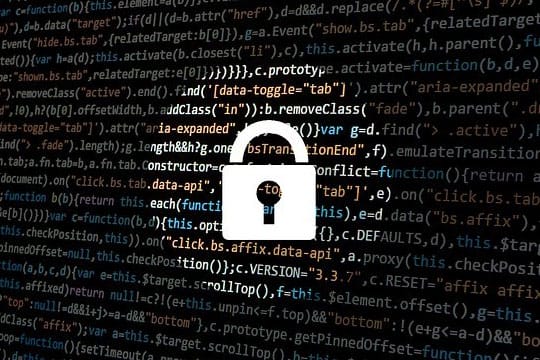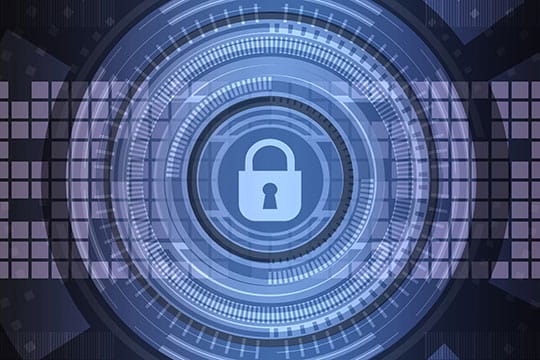Cybersecurity is one of the most important aspects of business in the wake of the coronavirus pandemic. When COVID-19 spread around the world, the FBI announced a 400% increase of reported cyber-attack complaints, illustrating the desperate situation companies and consumers face in terms of data security.
But businesses are also facing economic issues that require cutting costs and redistributing resources in the most efficient manner possible. A concentrated effort, then, is required in securing the most vulnerable documents and protocols. Understanding what these documents and protocols are as well as how to best secure them will help businesses keep essential data safe while functioning efficiently.
From business plans to employee network access, your approach to cybersecurity hinges on developing comprehensive protections for all your most vulnerable information. Here’s what you need to know.
The Need for Secure Documents and Protocols in Business for Cybersecurity

2020 represented a fast shift in virtually every industry as companies pivoted their policies to face the challenges of a global pandemic. Meanwhile, a secondary pandemic of cybercrime has swept the world.
In an attempt to keep workers safe, companies quickly developed remote work options for millions, ballooning the number of networks being accessed from vulnerable home systems. At the same time, the overall fear and chaos of the economic shutdowns offered what cybercriminals saw as an opportunity.
In just a week after the crisis was declared a pandemic, companies like Microsoft saw directed cyberattacks playing off people’s fears and vulnerabilities increase eleven-fold.
Hackers have expanded their efforts to steal data and ransom systems through a host of dangerous techniques. Some of the most common attacks include:
- Malware campaigns;
- Phishing and social engineering;
- Distributed denial-of-service (DDoS).
Each of these categories of cyber-attack comes with dozens if not hundreds of variations in which an attacker might go about obtaining access to a system or confidential data. Each of these has the potential to cause massive damage to a company’s functionality, with the average cost of a data breach as high as $8.19 million.
Even before the pandemic, the risks associated with operating on a digital system at all required the proper precautions. Now, however, it is more necessary than ever to keep networks protected through comprehensive cybersecurity measures that make a priority of specific documents and protocols.
Securing your data for all your business needs requires formulating and executing a comprehensive cybersecurity plan. In this process, you’ll need to create and review documents, generate protocols, and reinforce practices that give your business the level of security demanded by the modern era.
Below, you’ll find a breakdown of these cybersecurity must-haves.
Recommended for you: Cybersecurity Risk Assessment & Management Tips for Small Businesses.
Business Documents to Create and Secure from Cybersecurity

Running a business means you’ll need a host of protected documents, now typically stored over cloud data systems. These documents range in purpose from day-to-day records and meeting minutes to the foundational plans that detail your business’s financial information and goals. You don’t want any of this information to become inaccessible or held at ransom, so a plan is necessary for the proper creation and storage of all your data.
This process requires the development of continuity plans, an assessment of risk, and a network with uncompromised security features. These items will aid in determining a data storage system that can be easily updated and managed without risking information security, which is now common in accredited third-party cloud hosting platforms.
However, whether your company manages data in-house or through a contracted service, you will need to develop and secure these documents to ensure a complete cybersecurity approach.
Business Plans

When the pandemic struck, many businesses realized too late that it would have behooved them to have had plans in place for protocols and practices designed for that inevitability. Part of any business’s cybersecurity approach should be the creation of a continuity plan for data breaches and attempted infiltration.
Such a plan will detail critical business functions for every type of cyber-attack likely to hit a system. This means creating a procedure for handling ransomware, DDoS attacks, social engineering attempts, and more, as well as the procedures for storing data securely throughout business growth.
The creation and writing of a continuity plan for cybersecurity will entail:
- Identifying the scope and scale of your cybersecurity needs and how they will evolve over time.
- Formulating a team dedicated to rising to the challenges of a data emergency.
- Detailing a plan to maintain operations.
- Training staff to handle cybersecurity threats.
These items and more all in one comprehensive document will help ensure that when the time comes, your staff will know exactly what to do to protect vital data systems.
Risk Assessments

Another key element of streamlining your cybersecurity approach is to conduct a thorough risk assessment of your data storage and network usage. This document will review all your needs and vulnerabilities to help you close up cybersecurity gaps in your system before they can be exploited.
A thorough vulnerability analysis will explore a cybersecurity approach through a variety of angles over three primary stages to ensure effective protection. These stages are:
- A holistic system evaluation determining IP accessibility, permissions, and usage.
- An identification of baselines for operating systems, software, and more.
- An implementation of vulnerability scanning procedures to keep systems consistently secure.
By moving through these stages, your cybersecurity team can create risk assessment documentation that will show you exactly where your system is most vulnerable and where improvements must be made.
Employee and Financial Information

The last documents you need to keep in mind for your cybersecurity approach are any and all files with private data attached, be it business or personal employee info. Data breaches can mean that employee personal information is compromised, which can create its own share of liability issues. Similarly, leaked customer data can lead to an irrevocably damaged business reputation.
Generate secure and encrypted solutions to all your private information storage needs. Create a timeline for the destruction of sensitive records. And ensure that employees are trained in cybersecurity best practices such as never giving out personal information without first verifying the receiver.
You may like: 7 Tips to Help Your Business Adapt Following COVID-19.
Protocols to Create and Secure from Cybersecurity for your Business

With documents on hand for navigating and improving your cybersecurity solutions, it is necessary to also implement secure protocols for managing all your data and technological systems. The cybersecurity threats of the future include the use of malware to hack devices on the Internet of Things (IoT) networks as well as individual employee devices. Without developed and proven procedures for handling such attacks, your security efforts will consistently fall flat.
Company-wide protocols are required for maintaining your overall security. The procedures can be as simple as scheduling consistent updates for operating systems or as complex as integrating a blockchain database to better protect your data.
No matter what protocols you decide will align best with your business needs, consider the following to develop a stronger cybersecurity approach.
System Updates and Patches

Hackers adapt to changes in a system. To stay safe, your system has to adapt, as well. This means keeping all technologies up-to-date with their relevant patches and updates.
For such a simple concept, installing updates and patches can make a substantial difference in your security efforts. In fact, one in three IT professionals across Europe reported experiencing a security breach due to an unpatched vulnerability, highlighting just how many attacks can be stopped with the right attention to detail.
For your business, maintain a regular protocol for installing patches and updates or utilize a data service that takes care of these updates for you.
Ports and Services

In the wake of the coronavirus pandemic, the surge in the use of Remote Desktop Protocol (RDP) left millions of systems exposed to penetrative attacks. Any business integrating remote work procedures—a commonality of the modern workforce—needs to develop protocols for scanning ports for unauthorized usage and cracking down on vulnerabilities where they occur.
Securing your ports and services requires the use of firewalls on top of consistent scans and port traffic filtering. Businesses must monitor every aspect of their network usage to guarantee that open ports are closed off and malicious users are kept out.
A supply chain management company, for example, could integrate cyber supply chain risk management (C-SCRM) protocols to maintain a comprehensive view of the security, functionality, and integrity of their system. This helps to guarantee the safety of vendor data while smoothing the efficiency of the service overall.
Employee Network Access

Finally, some of the best protocols you can integrate throughout your business are employee education and training opportunities that will ensure your workforce is on the same page regarding cyber safety. The amount of damage that can be prevented through simple education makes employee cybersecurity training a necessary priority.
With many workers now accessing networks through RDPs as well as traditional work stations, it is vital to train employees on cybersecurity best practices. These include:
- Encrypting websites with SSL.
- Creating strong passwords and changing them regularly.
- Never clicking on links and spam.
- Using only authentic plugins and hosting platforms.
- Using multi-factor authentication whenever possible.
By following these simple procedures and training the entire workforce to follow them as well, your business data can remain as secure as possible. While there is no guaranteed method of preventing cyber attacks, an educated workforce using clean network access protocols will reduce risk and maintain a culture of cyber awareness. The rest will be a combination of luck and the right antivirus software.
You may also like: Here’s Why Small Businesses Are Ideal Targets for Hackers!
Conclusion

Cybersecurity threats are at an all-time high. Protecting your business against these threats requires the creation and implementation of secure documents and protocols that will stop the vast majority of attacks in their tracks. With these items in place, your business stands a much greater chance of surviving the dangerous digital environment and thriving as the world gains a greater reliance on secure data processes.





